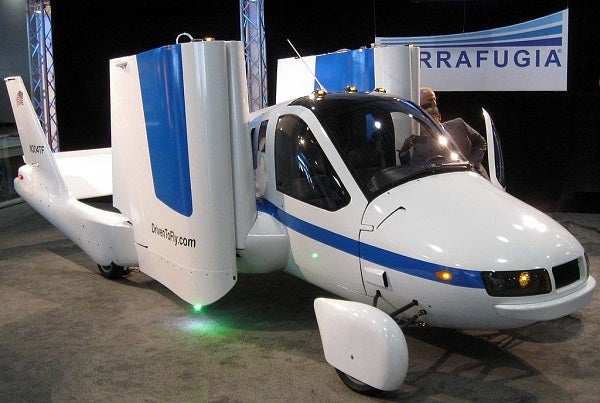This article was published in Scientific American’s former blog network and reflects the views of the author, not necessarily those of Scientific American
Anytime I see some shiny new technology, especially out of Silicon Valley, the two questions I always ask are: How is it powered? And: What is it solving?
In this case, we are now told that flying cars are becoming real, and will be powered by batteries. And that comes with challenges: Even without taking into consideration the exponential power needed to fight gravity, today’s most powerful lithium-ion batteries run into issues of range. And let’s not forget potential safety glitches that might cause a surface-bound electric car to pull over to the side of the road. In the air, good luck to you.
Not counting regulatory challenges of safety, insurance, and licensing, the technical challenges would include:
On supporting science journalism
If you're enjoying this article, consider supporting our award-winning journalism by subscribing. By purchasing a subscription you are helping to ensure the future of impactful stories about the discoveries and ideas shaping our world today.
Battery life issues stemming from the large amount of energy needed to achieve initial lift-off.
Laws of physics (1): Despite promises of low-costs and no battery limitations, the fact is that an electric flying car faces the same limitations as an electric flying plane, because, wait for it, they are the same thing!
Laws of physics (2): The pesky square-cube law first delineated by Galileo in 1683, loosely translates into: more battery = more weight = decreased range. Thus, until we make some hypothetical big leap in battery technology, Galileo is still on the money.
Second question: What does this solve? Is the world in desperate need of flying cars, or is this simply an exercise in doing something because we can? People hate traffic and literally want to fly to work (that’s why car ads always show cars in zero traffic), but even while Uber Chopper is all-too-real, the costs and efficiency will always be respectively high and low.
Looking past this infatuation with shiny new toys, there is a deep-running tendency in Silicon Valley to approach solutions with a heavy tinge of quick-fix technology, without considering whether or not a systematic approach is needed, or a multi-stakeholder solution.

A flying car, light on solutions, heavy on weight. Credit: MarkWarren Wikimedia (CC BY-SA 3.0)
While a systematic approach may sound dull, consider this: the traffic congestion in Silicon Valley is among the worst in America, and it is only getting worse. Solutions could include integrated land-use and transport planning, better rail, better buses, and other complex infrastructure solutions. Instead, Silicon Valley’s solution is… flying cars?
Dear Silicon Valley, instead of fixing your eyes at the skies, searching for the next Segway to “solve mobility”, just skip flying cars and address real problems.
In fact, here are five things Silicon Valley could lend its technological heft to, right now:
Better parking solutions.
Improved public transport route optimization.
Better consumer information on the combined costs of housing and transport.
Innovative financing solutions for transport infrastructure and services.
Otherwise, Silicon Valley will be doomed to irrelevance with others picking up the slack. As David Li of Shenzhen Open Innovation Lab recently put it to The Economist:
“’Anybody can come to Shenzhen with an idea and get it prototyped, tested, made and put on the market at a decent price,’ he says. Silicon Valley is obsessed with rich-world problems, he thinks, but China’s open innovators work on affordable solutions for the masses on everything from health care to pollution to banking.”